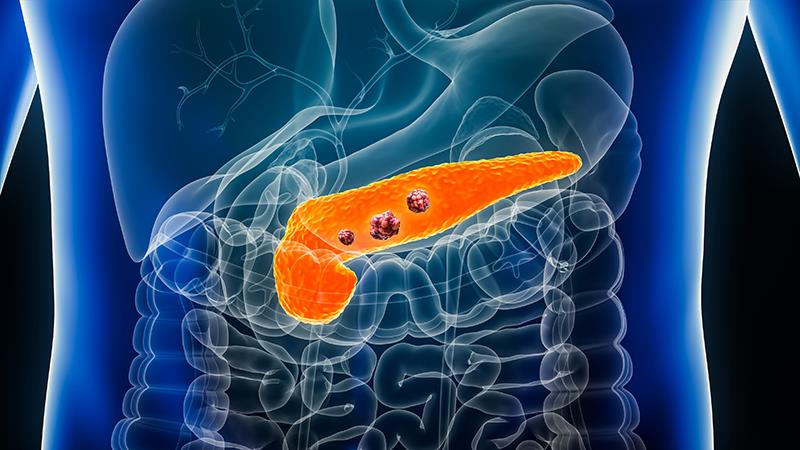NALIRIFOX improves survival in older patients with mPDAC





Treatment with liposomal irinotecan plus 5-fluorouracil, leucovorin, and oxaliplatin (NALIRIFOX) improved overall survival (OS) and progression-free survival (PFS) in patients aged ≥65 years with metastatic pancreatic ductal adenocarcinoma (mPDAC) compared with gemcitabine plus nab-paclitaxel (Gem+NabP), according to a post hoc analysis of the phase III NAPOLI 3 trial presented at ESMO GI 2024.
“Although mPDAC is commonly diagnosed in patients aged 65–70 years, older patients are often underrepresented in clinical trials and may be ineligible for available treatments,” said the researchers.
Hence, the researchers conducted a subgroup analysis of NAPOLI 3 involving patients aged ≥65 and ≥70 years with mPDAC. They were randomized 1:1 ratio to receive either NALIRIFOX* (n=190 [≥65 years] and n=108 [≥70 years]) or Gem+NabP** (n=196 and n=109, respectively). [ESMO GI 2024, abstract 323P]
In patients aged ≥65 years, those treated with NALIRIFOX had a longer median OS (11 vs 9 months; hazard ratio [HR], 0.77) and PFS (7.4 vs 5.6 months; HR, 0.65) compared with those treated with Gem+NabP. A similar trend was seen among those aged ≥70 years (median 10 vs 8.7 months; HR, 0.86 [OS] and 7.3 vs 5.9 months; HR, 0.72 [PFS]).
Taken together, NALIRIFOX regimen improved OS and PFS irrespective of age. The results were consistent with those observed in the overall population, noted the researchers.
A higher objective response rate was observed with NALIRIFOX than with Gem+NabP in the younger cohort (37.4 percent vs 31.6 percent), while the rates were similar in the older cohort (32.4 percent vs 32.1 percent).
Moreover, there was a longer duration of response with NALIRIFOX than with Gem+NabP in both groups of patients aged ≥65 (median 7.2 vs 5.2 months) and ≥70 years (7.8 vs 5.6 months).
In terms of safety, compared with Gem+NabP group, the NALIRIFOX group had lower rates of grade 3–4 neutropenia (24.3 percent vs 32.8 percent [≥65 years] and 21.4 percent vs 33.6 percent [≥70 years]), but higher rates of grade 3–4 diarrhoea (24.9 percent vs 5.7 percent and 23.3 percent vs 6.5 percent, respectively).
“Safety data in the subgroups were consistent with data for the overall population and no additional toxicities were observed with NALIRIFOX in older patients,” said the researchers.
There were no differences in the incidences of subsequent anticancer therapy between the NALIRIFOX and Gem+NabP arms in both groups of patients aged ≥65 and ≥70 years (50.8 percent vs 52.6 percent and 44.7 percent vs 47.7 percent, respectively).
“Overall, treatment with NALIRIFOX has demonstrated clinical benefit with a safety profile that is manageable and consistent with the profiles of the treatment components … This prespecified and post hoc analysis from the NAPOLI 3 study suggests that increasing patient age is not prognostic of mortality or disease progression in this population,” said the researchers.
“Similar to younger patients, older patients benefit from treatment with NALIRIFOX; however, the results of this analysis were not statistically significant, and conclusions are limited by the small number of patients,” they noted.